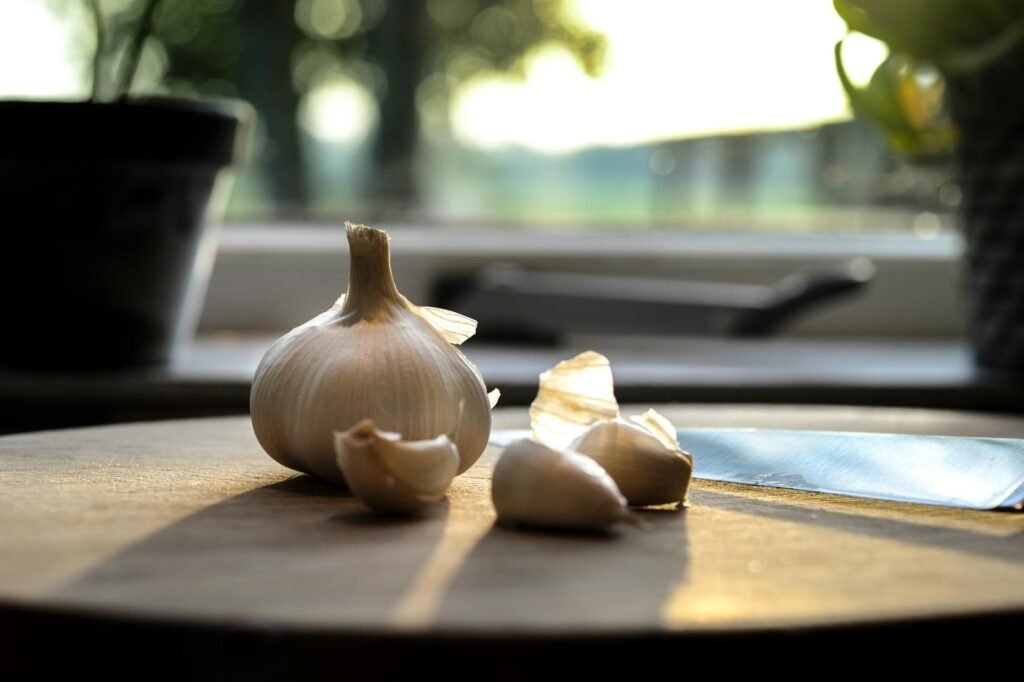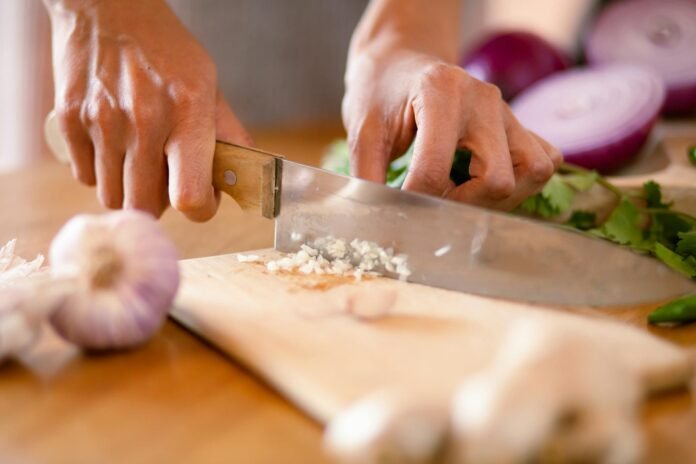Garlic, a quintessential cornerstone of cuisines worldwide—is both a spice and an herb that can elevate any meal with its bold, aromatic presence. If you’re looking to master the art of cooking with garlic, it’s crucial to understand the subtleties that transform its use from simply adding a component to truly enhancing a dish. Here are four top tips to help you wield garlic like a pro in the kitchen.
Tip 1: Choose Your Garlic Wisely
Table of Contents
Not all garlic is created equal. The type of garlic you choose can have a significant impact on the flavor of your dishes. The two primary types of garlic are:
- Hardneck Garlic: Known for its distinctively robust flavor and larger cloves, hardneck garlic is ideal for roasting or using in recipes where garlic is the star ingredient.
- Softneck Garlic: More commonly found in grocery stores, softneck garlic has a milder taste and a longer shelf life. It’s suitable for more subtle garlic needs, like in a delicate sauce or dressing.
Additionally, the fresher the garlic, the better the taste. Always look for plump, firm bulbs with tightly closed cloves.


Tip 2: Release Flavor to Fit Your Dish
Garlic’s potency is released and altered depending on how you prepare it. Here’s how you can control the strength of the flavor:
- Whole Cloves: These impart more subtle and sweeter nuances to dishes, perfect for infusing oils or creating heartier stews.
- Sliced or Crushed: This method encourages a more even, gentler garlic flavor, ideal for stir-fries and sautés.
- Finely Chopped or Minced: Chopping garlic finely—or using a garlic press—produces a more pronounced garlic flavor, which is great for sauces and dressings.
- Microplaned or Pureed: A paste tends to distribute the strongest, most pungent garlic flavor throughout a dish, perfect when you want to feature garlic front and centre, like in garlic bread or a marinade.
Tip 3: Add Garlic at the Right Time
Adding garlic too early to a hot pan can risk burning it, leaving a bitter taste. To avoid this:
- Sauté Gently: If you’re starting a dish with garlic, add it to the pan after your oil has warmed but before it’s too hot, and stir frequently.
- Layer it In: For dishes with nuanced flavours, consider adding garlic in two stages—beginning for depth and towards the end for brighter notes.
- Slow and Steady: For dishes like soups or stews, let garlic simmer with other ingredients to build a deep, mellow flavor profile.
Tip 4: Embrace the Sweet Side of Garlic
Roasting garlic can showcase its sweeter, more mellow side. Here’s how to create velvety, caramelized cloves:
- Roast Whole Bulbs: Cut just the very top off a bulb of garlic to expose the individual cloves, drizzle with olive oil, wrap in foil, and bake until soft and golden.
- Individual Cloves: If you’re short on time, peel and roast individual cloves with a little oil in a baking dish to achieve a similar, though slightly less intense, sweet roasted flavor.
Understanding these four foundational tips for cooking with garlic is your starting point for amplifying the flavor in countless dishes. Source the best and freshest bulbs, respect garlic’s dynamism in preparation and cooking, and don’t shy away from experimentation. Whether you are aiming for a gentle whisper or a bold proclamation of flavor, garlic is your versatile culinary ally. Embrace it in your kitchen practice, and every meal can become both a journey and a destination for the taste buds.


